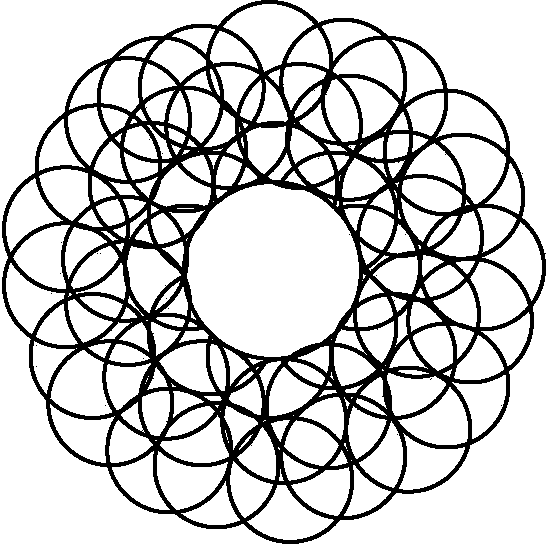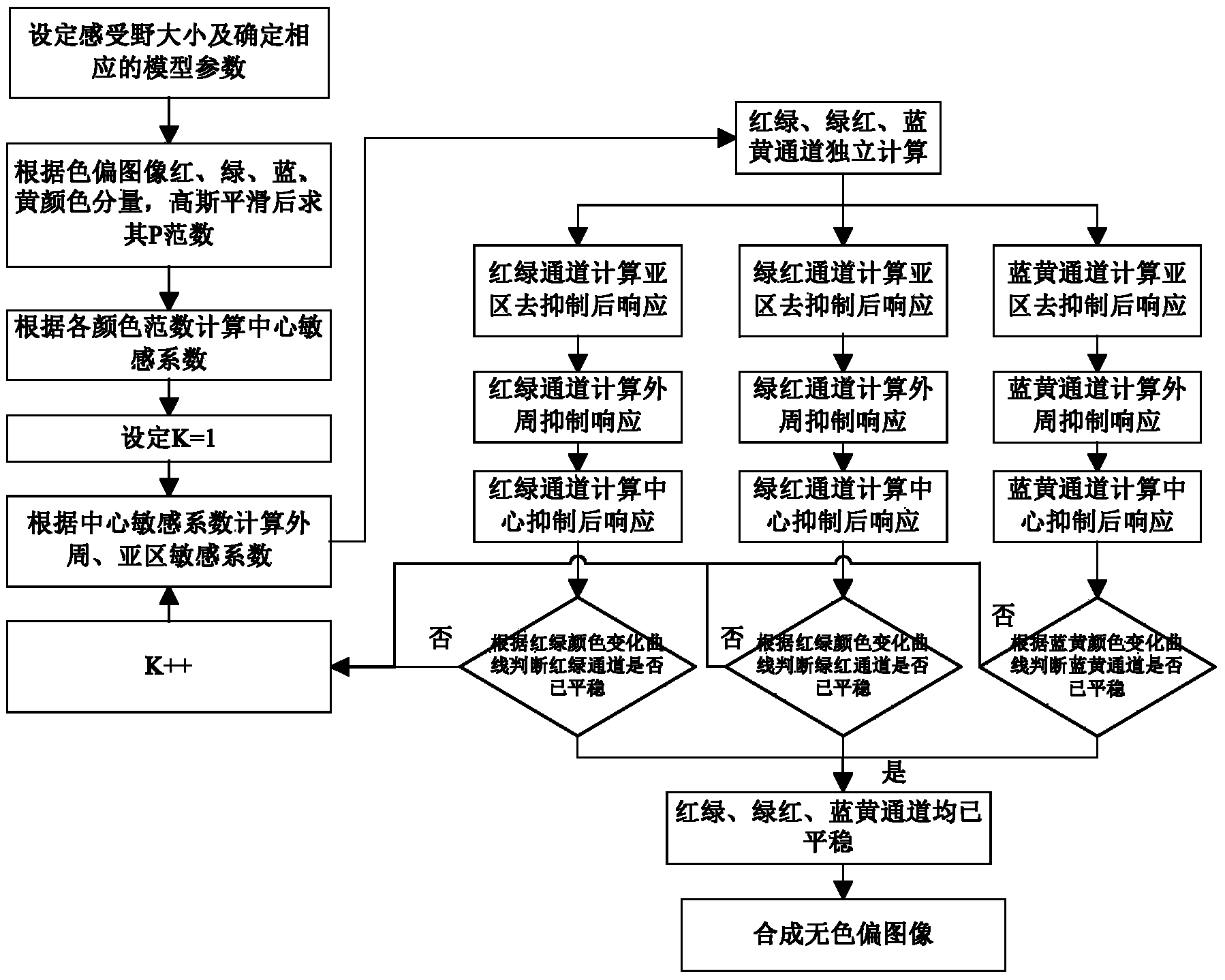Color constancy method with adaptive capacity
A color-constant, self-adaptive technology, applied in the field of image processing, which can solve the problems of not taking into account the different sensitivity coefficients of the central area and being unable to automatically adapt to different images.
- Summary
- Abstract
- Description
- Claims
- Application Information
AI Technical Summary
Problems solved by technology
Method used
Image
Examples
specific Embodiment approach 1
[0050] Specific implementation mode 1: Test on the Gehler library
[0051] In the international general color constancy image database Gehler library containing 568 images ( http: / / www.cs.sfu.ca / ~colour / data / shi_gehler / ) to test and evaluate this method. The radius of the central area of the receptive field is set to 1, the radius of the peripheral inhibition area is set to 3, the radius of the sub-area is set to 1, and the P norm is set to 10. The test results are shown in Table 1, which has better results than the classic color constancy algorithm ( The angle error represents the gap between the processed image without color shift and the real image without color shift, the smaller the color, the better the color recovery).
[0052] Table 1. Median angle error of different algorithms for Gehler library images
[0053] Methods
specific Embodiment approach 2
[0054] Specific implementation mode two: test on the SFU library
[0055] In the international common color constancy image database SFU library containing 321 pictures of 31 scenes ( http: / / www.cs.sfu.ca / ~colour / data / colour_constancy_test_images / index.html / ) to test and evaluate this method. The radius of the central area of the receptive field is set to 1, the radius of the peripheral inhibition area is set to 3, the radius of the sub-area is set to 1, and the norm is set to 15. The test results are shown in Table 2 below, which has better results than the classic color constancy algorithm (angle The error represents the difference between the processed image without color shift and the real image without color shift, the smaller the color, the better the color recovery).
[0056] Table 2. Median angle error of different algorithms for SFU library images
[0057] Methods
PUM
 Login to View More
Login to View More Abstract
Description
Claims
Application Information
 Login to View More
Login to View More - R&D
- Intellectual Property
- Life Sciences
- Materials
- Tech Scout
- Unparalleled Data Quality
- Higher Quality Content
- 60% Fewer Hallucinations
Browse by: Latest US Patents, China's latest patents, Technical Efficacy Thesaurus, Application Domain, Technology Topic, Popular Technical Reports.
© 2025 PatSnap. All rights reserved.Legal|Privacy policy|Modern Slavery Act Transparency Statement|Sitemap|About US| Contact US: help@patsnap.com



